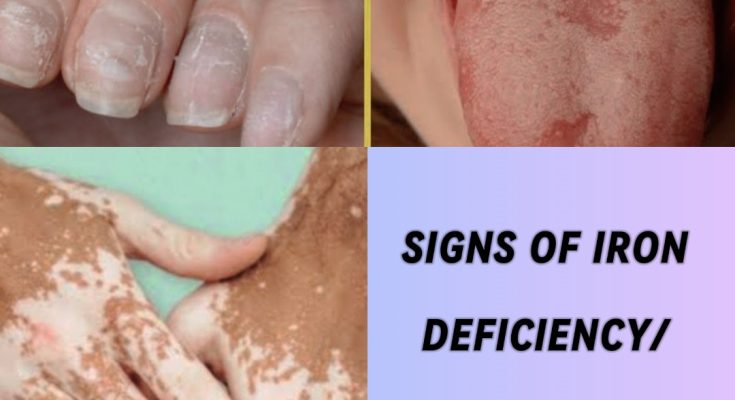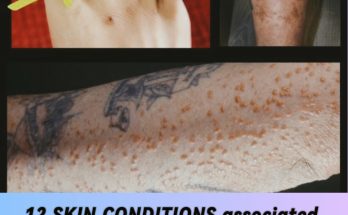Iron deficiency is a common nutritional deficiency that, if left untreated, can progress to iron deficiency anemia.1 The symptoms can be similar, but iron deficiency anemia generally presents with more pronounced and widespread signs as the body’s ability to carry oxygen is significantly impaired

Here’s a breakdown of the signs:
Common Signs of Iron Deficiency (even before it becomes full-blown anemia):
- Fatigue and Weakness: This is one of the most common and often earliest signs.2 You might feel constantly tired, lack energy, and feel weak, even after getting enough sleep.3
- Pale Skin (Pallor): Iron is essential for hemoglobin, the protein in red blood cells that gives blood its red color.4 When hemoglobin levels are low, your skin, inner eyelids, and nail beds may appear paler than usual.5
- Decreased Concentration: Iron plays a role in cognitive function, so low levels can lead to difficulty focusing, brain fog, and problems with memory.6
- Headaches and Dizziness/Lightheadedness: Reduced oxygen flow to the brain can cause these symptoms.7
- Restless Legs Syndrome (RLS): An irresistible urge to move your legs, often accompanied by uncomfortable sensations, especially at night.8
- Brittle Nails: Nails may become fragile, break easily, or even develop a spoon-like shape (koilonychia) in more severe cases.9Hair Loss/Thinning: Iron deficiency can affect hair health, leading to increased shedding or thinning.10
- Cold Hands and Feet: Poor circulation and reduced oxygen delivery can make you feel colder, especially in your extremities.11
- Increased Susceptibility to Infections: Iron is important for a healthy immune system.12
Signs that indicate progression to Iron Deficiency Anemia (more severe due to insufficient healthy red blood cells):
When iron deficiency becomes severe enough to cause anemia, the symptoms often become more noticeable and may include all of the above, plus:
- Shortness of Breath: Even with mild exertion, you might find yourself out of breath because your blood can’t carry enough oxygen to your tissues.13
- Noticeable Heartbeats (Heart Palpitations) or Fast Heartbeat: Your heart has to work harder to pump oxygen-poor blood throughout your body.14
- Chest Pain: In severe cases, the heart’s increased workload can lead to chest pain.15
- Sore or Smooth Tongue (Atrophic Glossitis): The tongue may become inflamed, swollen, unusually smooth, or pale.16
- Cracks at the Corners of the Mouth (Angular Cheilitis): Painful fissures can develop at the corners of your lips.17
- Pica: A craving for non-food items, such as ice, dirt, clay, paper, or starch.18 This is a very strong indicator of iron deficiency.
- Strange Taste in Food: Food may taste unusual or metallic.19
- Difficulty Swallowing (Dysphagia): In rare and severe cases.20
- Itchiness: Unexplained general itching.
Important Considerations:
- Severity of Symptoms: The severity of symptoms often depends on how quickly the deficiency develops. If it’s a gradual process, your body may adapt, and symptoms might be less obvious initially.
- Underlying Causes: It’s crucial to identify the underlying cause of iron deficiency (e.g., blood loss from heavy periods or gastrointestinal bleeding, poor absorption, insufficient dietary intake).21
- Diagnosis: Iron deficiency and iron deficiency anemia are diagnosed through blood tests, including a complete blood count (CBC), and tests to measure iron levels, ferritin (iron storage protein), and transferrin saturation.22
- Self-treating is NOT recommended: If you suspect you have iron deficiency, consult a doctor. They can accurately diagnose the condition and recommend the appropriate treatment, which may involve iron supplements and addressing the root cause.23 Taking iron supplements without medical supervision can be harmful.24

